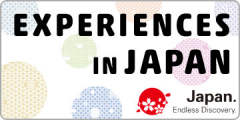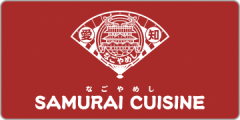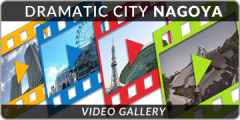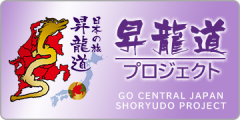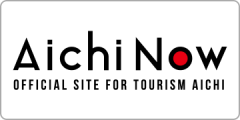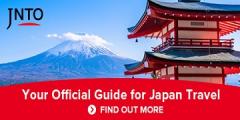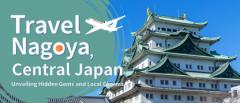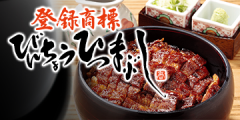- Home
- Sightseeing Spots
Sightseeing Spots
21 - 40 / 148 RESULTS
-

Sakae / Fushimi
Broadcast Experience Studio Waku Waku
The exhibition includes the "Okaasan to Issho Taisou Hiroba" (Exercise Square with Mom and Dad), "Chiko-chan Shoukai Corner" (Chiko-chan Introduction Corner), "Manekko Doomo-kun," "Wanwan Shoukai Corner" (Wanwan Introduction Corner), "Okaasan to Issho Character Shoukai Corner" (Introduction of Characters from Mom and Dad Are with Me), "Housou Bangumi Shoukai Corner" (Broadcast Program Introduction Corner), and more. ※The program public library is currently suspended. See More
The exhibition includes the "Okaasan to Issho Taisou Hiroba" (Exercise Square with Mom and Dad), "Chiko-chan Shoukai Corner" (C…See More
-
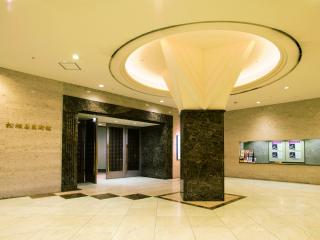
Sakae / Fushimi
Matsuzakaya Museum
Located in the south wing of Matsuzakaya Nagoya in Sakae, downtown of Nagoya. The museum that you can drop while at shopping. Though, this museum does not have its own collection, but instead be held a series of high-quality exhibitions of paintings, crafts, and other works from Japan and abroad. See More
Located in the south wing of Matsuzakaya Nagoya in Sakae, downtown of Nagoya. The museum that you can drop while at shopping. Tho…See More
-
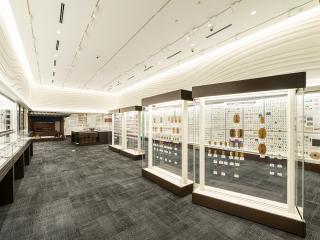
Sakae / Fushimi
MUFG Bank Money & Ukiyo-e Museum (Formerly MUFG Bank Money Museum)
With the aim of contributing to society by preserving cultural properties and educating the public about them, this museum owns around 15,000 rare coins and bank notes and 1,800 ukiyo-e woodblock prints which are put on public display. The money exhibition room displays rare coins and notes from Japan and various countries around the world, including the world's oldest currency in the form of Shang dynasty cowrie shells. The Japanese currency features a gold coin called "Tensho Oban" whose production was ordered by Hideyoshi Toyotomi as well as Edo period currency and printing blocks, few of which are extant today. See More
With the aim of contributing to society by preserving cultural properties and educating the public about them, this museum owns a…See More
-
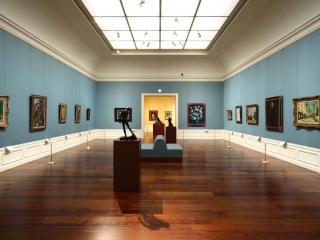
Sakae / Fushimi
Yamazaki Mazak Museum of Art
This museum allows you to gaze over the 300-year history of French art from the 18th to 20th century with French Rococo to Ecole de Paris painted pieces, Art Nouveau glasswork and furniture pieces represented by Emile Galle, and more. ・Easy access, directly connected to Exit 1 of Shinsakae-machi Station on the subway Higashiyama Line ・Many Rococo paintings, including works by Marie Antoinette's personal painters ・The galleries are decorated with chandeliers and wallpaper that turn them into 18th century salons ・Free audio guides available See More
This museum allows you to gaze over the 300-year history of French art from the 18th to 20th century with French Rococo to Ecole …See More
-
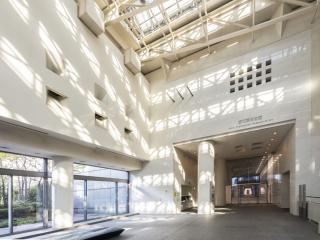
Sakae / Fushimi
Aichi Prefectural Museum of Art
Aichi Prefectural Museum of Art opened in 1992 on the 10th floor of the Aichi Arts Center. The museum collects international and domestic art works from the early 20th century to the present which are shown at permanent collection exhibitions. In addition, temporary exhibitions are held periodically based on various art movements or artists. See More
Aichi Prefectural Museum of Art opened in 1992 on the 10th floor of the Aichi Arts Center. The museum collects international and …See More
-
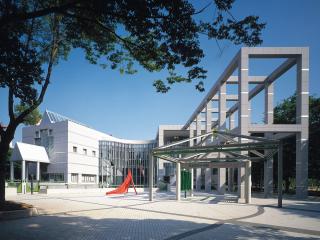
Sakae / Fushimi
Nagoya City Art Museum
A modern building designed by famous architect Kisho Kurokawa, this art museum houses a collection of about 8,500 works that are continually on display including École de Paris artists such as Modigliani, works from Mexican Renaissance, contemporary art, and local Japanese artists. See More
A modern building designed by famous architect Kisho Kurokawa, this art museum houses a collection of about 8,500 works that are …See More
-
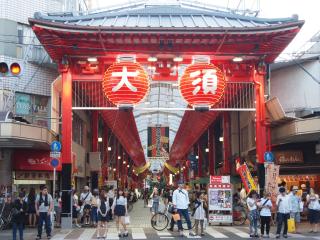
Osu / Kanayama
Osu Shopping District
The Osu Shopping District is a huge and popular shopping area containing over 1,200 shops and restaurants. All kinds of shops, including electrical appliance shops, secondhand clothing stores, restaurants and cafes are open. The mall is always crowded with people and filled with energy. Many events are held throughout the year, including the Osu Summer Festival in August, the Osu Daido-chonin Festival in October and the Osu Setsubun Takarabune Gyoretsu (treasure ship parade) in February. Osu Kannon Temple located was moved from Osu Village, Mino Province to the current location by the Shogun Ieyasu Tokugawa in 1612. The antique market is held here on the 18th and 28th of each month. See More
The Osu Shopping District is a huge and popular shopping area containing over 1,200 shops and restaurants. All kinds of shops, in…See More
-
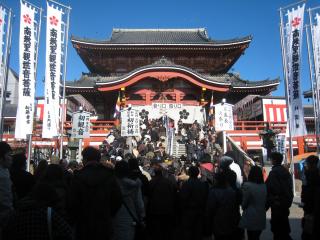
Osu / Kanayama
Osu Kannon Temple
Receive the gift of Kannon's mercy and Tenjin's wisdom The Osu shopping district is huge and popular shopping area containing over 1,200 shops and restaurants. All kinds of shops, including electrical appliance shops, secondhand clothing stores, restaurants and cafes are open. The mall is always crowded with people and filled with energy. Many events are held throughout the year, including the Osu Summer Festival in August, the Osu Daido-chonin Festival in October and the Osu Setsubun Takarabune Gyoretsu (treasure ship parade). Osu Kannon Temple located was moved from Osu Village, Mino Province to the current location by the Shogun Ieyasu Tokugawa in 1612. The antique market is held here on the 18th and 28th of each month. See More
Receive the gift of Kannon's mercy and Tenjin's wisdom The Osu shopping district is huge and popular shopping area containing …See More
-
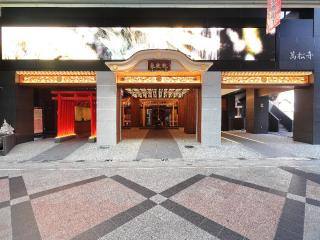
Osu / Kanayama
Banshoji
Banshoji Temple was established to pray for the repose of the soul of Oda Nobuhide (the father of the noted warlord, Oda Nobunaga). The temple was relocated to Osu when Nagoya Castle was built in 1610. Two karakuri mechanical dolls are exhibited: one expresses the scene of Nobunaga throwing incense at his father's funeral, and the other expresses the scene of Nobunaga performing a dance, "Kouwakamai", before going into the battle of Okehazama. See More
Banshoji Temple was established to pray for the repose of the soul of Oda Nobuhide (the father of the noted warlord, Oda Nobunaga…See More
-
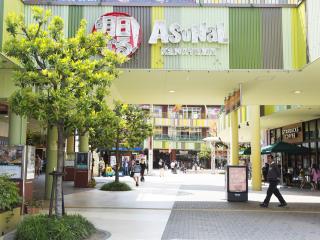
Osu / Kanayama
ASUNAL KANAYAMA
Cheerful and carefree, convenient and comfortable. Asunal Kanayama—A place of exciting events and new discoveries Kanayama—the gateway to Chubu Centrair International Airport. ASUNAL KANAYAMA is a redeveloped commercial establishment outside the north exit of the station, and acts as a shopping mall surrounding an event space. Also acting as a transportation terminal with its parking lot and bus terminal, it creates a bustling space centered around its event space. See More
Cheerful and carefree, convenient and comfortable. Asunal Kanayama—A place of exciting events and new discoveries Kanayama—the…See More
-
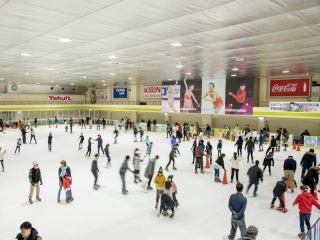
Osu / Kanayama
Osu Skate Rink
Known by the name "Osu Skate Rink," this central city skating facility has produced notable skaters such as Ito Midori, Asada Mao, Murakami Kanako, and Uno Shoma. Beginners and kids can feel at ease as they skate, holding onto cones for support. Rental shoes with two blades, suitable for shoe sizes ranging from 14cm to 16cm, are available. On weekends and holidays, there are lessons specifically designed for beginners, and on weekdays, the Junior School offers a wide range of courses from basic to figure skating, hockey, and speed skating. The gallery corner displays shoes used by Midori, Mao-chan, Kanako-chan, and Uno Shoma, along with other memorabilia associated with them. See More
Known by the name "Osu Skate Rink," this central city skating facility has produced notable skaters such as Ito Midori, Asada Mao…See More
-

Northern Area
Nagoya Castle
In 1610, Tokugawa Ieyasu began the construction of Nagoya Castle, as a residence for his son Yoshinao. The castle burned down in the war, but in 1959, the five-story main tower keep (approx. 48 meters), with its golden shachi ornaments, and the sub tower keep (approx. 24 meters) were reconstructed. The Nagoya Omotenashi Bushotai greet visitors every day at the main gate, and were the reason behind the bushotai boom across the nation. They also put on an omotenashi performance on weekends and national holidays. In addition, Hommaru Palace was fully opened to the public on June 8, 2018, after the completion of reconstruction work that had taken over 10 years. See More
In 1610, Tokugawa Ieyasu began the construction of Nagoya Castle, as a residence for his son Yoshinao. The castle burned down in …See More
-
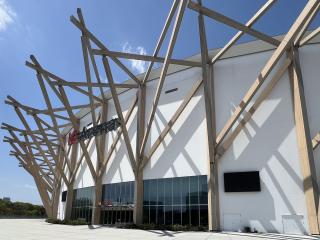
Northern Area
IG Arena
IG Arena opened in July 2025 inside Meijo Park, Nagoya City. One of the largest global arenas in all of Japan, it can accommodate a maximum of 17,000 people for sports competitions, live concerts, international expos, and a myriad of other events. IG Arena is also beloved for its modern and sophisticated design. See More
IG Arena opened in July 2025 inside Meijo Park, Nagoya City. One of the largest global arenas in all of Japan, it can accommodate…See More
-
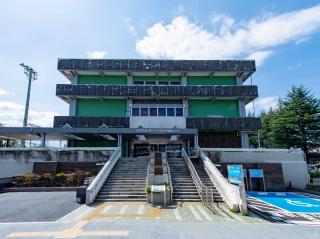
Northern Area
Metawater Nagoya Sewerage Science Museum
In 2020, the Metawater Nagoya Sewerage Science Museum underwent a renewal, transforming into an even more captivating facility with an increase in interactive games and models. It now offers a wide range of experiences for visitors. The museum serves as a public relations facility to help people of all ages, from children to adults, easily understand the mechanisms and significance of the sewerage system, which plays a crucial role in citizens' daily lives. By incorporating interactive games and models, the museum has made the sewerage system more easily understandable and enjoyable for visitors to learn about while having fun. See More
In 2020, the Metawater Nagoya Sewerage Science Museum underwent a renewal, transforming into an even more captivating facility wi…See More
-
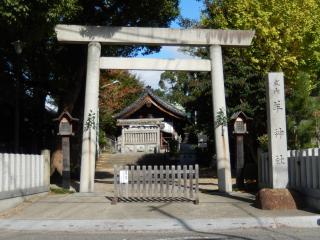
Northern Area
Hitsuji Shrine
The name of the shrine, Hitsuji Jinja is derived from a historical connection to a person called Hitsuji Taif), who was the lord of the Hitsuji clan. According to the inscriptions on the "Tago-hi" monument in Yoshii Town, Tano District, Gunma Prefecture (now part of Takasaki City, Yoshii Town), Hitsuji Taifu used to stop at a residence in this area (currently located in Nagoya City, Kita Ward, Tsuji-cho) during his journey to the capital in Nara. The people of this land wished for peaceful living, and thus, Hitsuji Taifu enshrined the deity of fire, leading to the shrine being called Hitsuji Jinja - the shrine where Hitsuji Taifu prayed for tranquility in people's hearts. The location of Tsuji-cho, where the shrine is situated, is described in the historical document of Owari Province as "Now, the village is called Tsuji, but it used to be known as 'Hinotsuji,' referring to its ass… See More
The name of the shrine, Hitsuji Jinja is derived from a historical connection to a person called Hitsuji Taif), who was the lor…See More
-
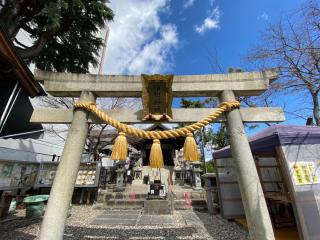
Northern Area
Seimei Shrine
A shrine dedicated to Abe no Seimei, an onmyoji (a practitioner of Japanese esoteric cosmology) from the Heian period. According to tradition, Abe no Seimei once resided in a hermitage in this vicinity. In the past, the area was abundant with marshes and was plagued by "mamushi" (venomous snakes), but it is said that Abe no Seimei performed prayers to confront these challenges, leading to the construction of this shrine in this location. Even today, the shrine continues to attract believers from all over the country as a place of protection against evil spirits and calamities. See More
A shrine dedicated to Abe no Seimei, an onmyoji (a practitioner of Japanese esoteric cosmology) from the Heian period. According …See More
-
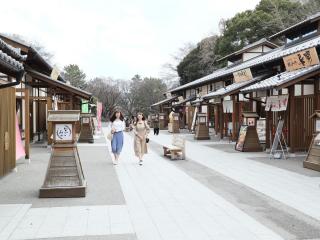
Northern Area
Yoshinao Zone of Kinshachi Yokocho
This is one of the commercial establishments to open in two areas of the Nagoya Castle premises on March 29, 2018. The Yoshinao Zone, situated in the main gate area of Nagoya Castle owes its name to the first provincial ruler of the Owari Tokugawa clan, Lord Yoshinao Tokugawa, and is created with the concepts of tradition and accuracy. The buildings are constructed in a wooden, purely Japanese style of architecture conjuring thoughts of merchant houses from the Edo period. Well-known restaurants offering the unique food culture of Nagoya cuisine, known as "Nagoya meshi", and long-standing, traditional local restaurants are lined up. You can also purchase Kinshachi Yokocho merchandise and famous items from Nagoya the commercial store so you never forget your great time. Enjoy both dining and shopping in Kinshachi Yokocho during your visit to Nagoya Castle. See More
This is one of the commercial establishments to open in two areas of the Nagoya Castle premises on March 29, 2018. The Yoshina…See More
-
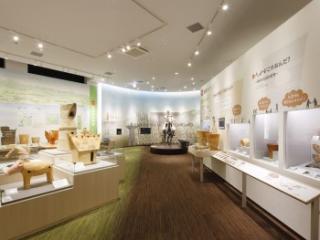
Northern Area
Shidami Kofungun Experience Museum
Approximately 200 tumuli were constructed in Nagoya with a third of them (66) confirmed in Kamishidami, Moriyama-ku; and seven--known as the Shidami Kofungun (Shidami Tumulus Group)--are designated national historic landmarks. The Shidami Kofungun occupies a narrow range of 1.7 km from east to west and 1 km from north to south, consists of tumuli built from the beginning of the Kofun (tumulus) period to its end, and is one of the rarest clusters of tumuli in all of Japan. The Shidami Kofungun Historical Area has been maintained to preserve the tumuli. The Shidami Kofungun Historical Area is something like a true-to-life encyclopedia in which you can actually walk around tumuli seeing their various characteristics and differences by the period they were built such as shape and size. The Shidami Kofungun Experience Museum (known as "SHIDAMU" for short) opens in the Shidami Kofungun H… See More
Approximately 200 tumuli were constructed in Nagoya with a third of them (66) confirmed in Kamishidami, Moriyama-ku; and seven--k…See More
-
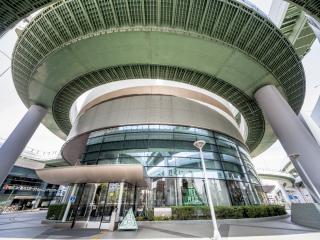
Northern Area
Nex Plaza" (Nagoya Expressway Public Relations Information Center)
Facility where both children and adults can have fun while deepening their understanding of the Nagoya Expressway. It introduces the construction and management of the expressway and includes interactive exhibits such as the "Driving Simulation," where visitors can design and experience driving on the expressway. The facility also features detailed construction models, and visitors can book in advance for tours of the traffic control room. See More
Facility where both children and adults can have fun while deepening their understanding of the Nagoya Expressway. It introduces …See More
-
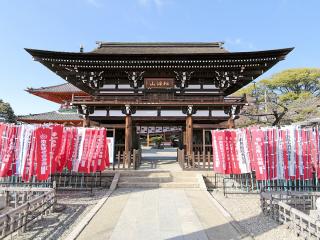
Northern Area
Ryusenji
Ryusenji Temple is a noted temple called the inner shrine of Atsuta Jingu and has the name of Shoutouzan. Denkyo-daishi (a great teacher of Buddhism) is said to be the founder of this temple. Niomon (Deva Gate) and a wooden statue of Jizobosatsu (the guardian deity of travelers and children) are designated as important cultural properties. In addition, the temple houses several hundreds of Buddhist statues including Batokannon (an image of Kannon which has a human body with the head of a horse) carved by Enku. Shops dealing in hobbyhorses operate on Setsubun (February 3). See More
Ryusenji Temple is a noted temple called the inner shrine of Atsuta Jingu and has the name of Shoutouzan. Denkyo-daishi (a great …See More






